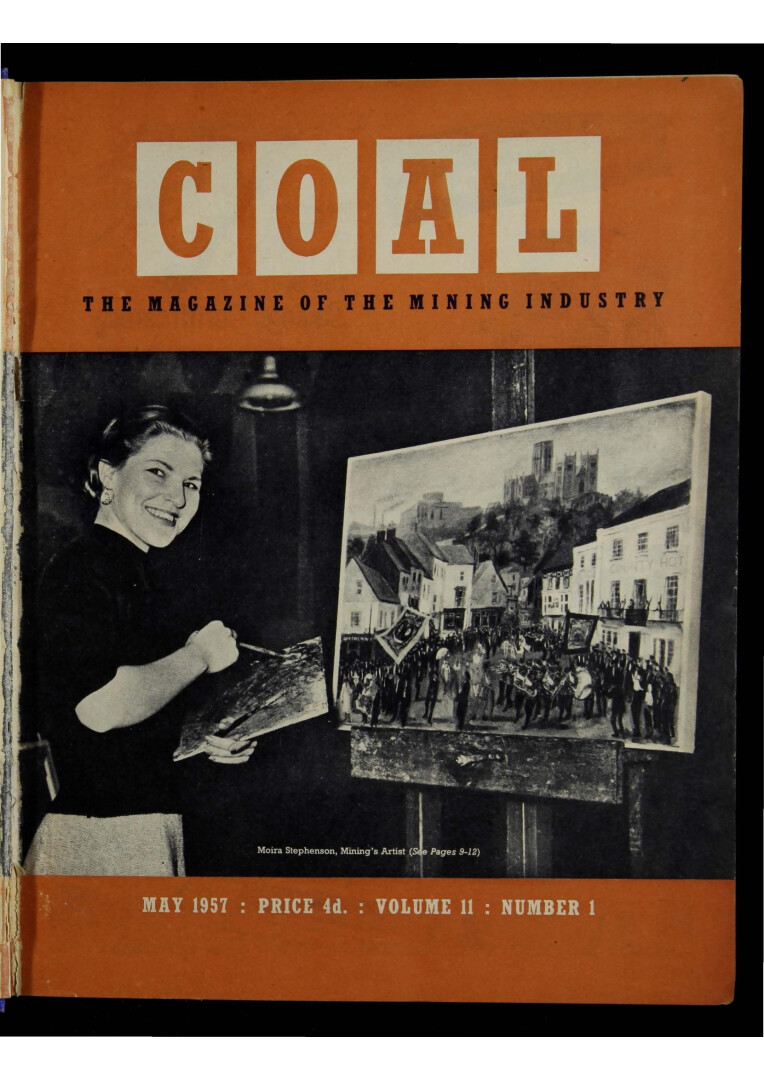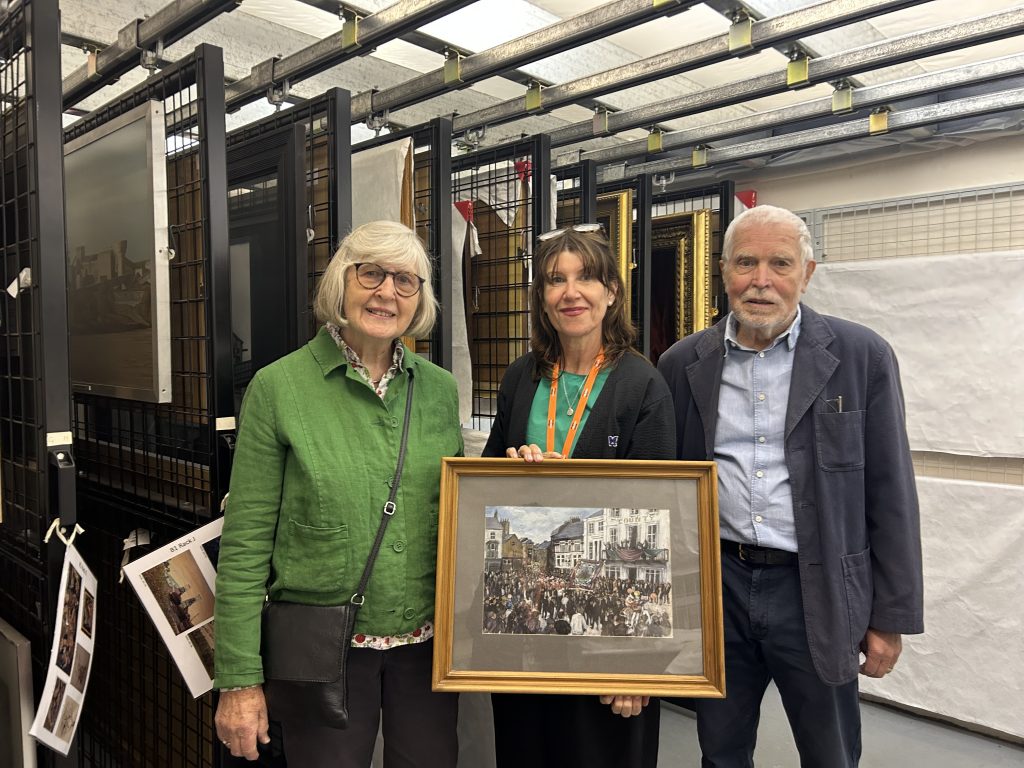Moira Stephenson

We are all by now accustomed to hearing of The Pitmen Painters, former miners who expressed their feelings about the industry in which they worked through art. Their work has frequently been the subject of exhibitions across the coalfields and indeed at this Museum.
Not so well known, however, are the women who did much the same thing. Until now, that is.
National Coal Mining Museum for England’s current temporary exhibition, From the Earth Comes Light, deals with just that – the women who expressed their feelings through art. Be it painting, sketching, photography or fabric work, these women have demonstrated clearly what it is to be a part of the mining community.
One such woman whose story is featured in the exhibition is Moira Stephenson. Her story, told in the May 1957 edition of Coal Magazine is an unusual one.
As a child Moira went through all the usual childhood ambitions to be a ballet dancer, an engine driver a teacher or a writer; artist did not figure in the list. Like most of us, art was a part of her school life but, also like most of us, there was nothing remarkable in the pictures she produced. That was until she attended Murton Council School when there was a significant change. One of her teachers decided to put a picture of hers forward for an exhibition – and it won a prize, the first money she was to receive for her art.
Her talent recognised, she was encouraged to continue and gained a place at the Northern Art School. Unfortunately for Moira, and no doubt others, the attitudes at the time meant that young women students were confined to life drawing classes. Some of her instructors though had other ideas. Her style, which had been characterised as “natural primitive” did not sit comfortably with life drawing, it lent itself to what she knew, the mining community, her mining community and its people and landscapes.
This is what she began to draw and , on the strength of a collection of her work, she was offered a place at The Royal Academy with a grant from her local council of £228 per annum.
From this point onwards Moira worked on what she chose to, and what she chose to work on was mining and miners and their environment.
Ever the pragmatist, and in the absence of an obvious market for her artwork, Moira looked to secure herself a living by becoming a teacher. It was a competition which brought Moira’s art to the public’s attention. The theme of the competition was Industrial Britain and Moira’s entry, The Dispute, was awarded second place and a prize of £100.
Now she took a brave decision, that she would be a painter and a painter of what she knew best. And it is a picture of Moira with one of these paintings, the Durham Miners’ Gala with the cathedral in the background, which is on the front cover of Coal Magazine.
Post by Volunteer Nicola
